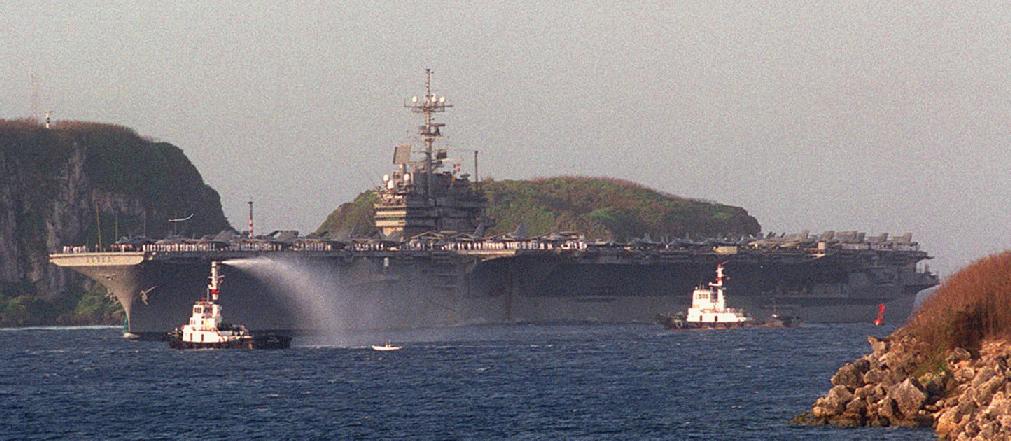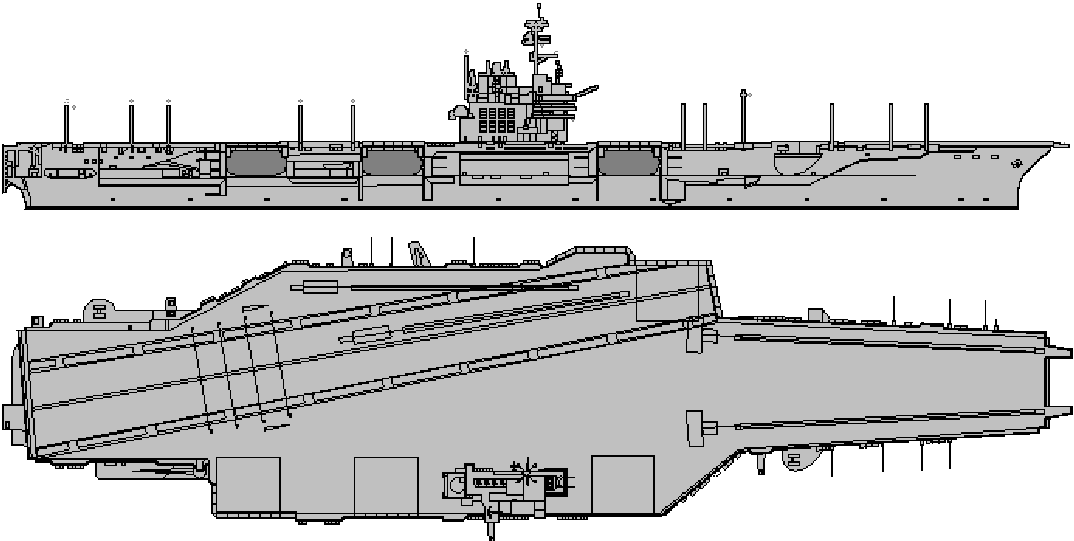
Daniel E. Pilot, ABEAN, USS Forrestal CVA-59
January 1967 - July 1967
I served aboard the Fighting Lady from January 1967 until the fire and mishap on Yankee Station, Vietnam. I was assigned as the bridle arrester deck edge operator on #3 Catapult when the explosions and fires started. I remember hearing the Air Boss yell over the 1MC, "some of you men get that fire out!" Looking aft, I saw a fireball engulfing an A4 Sky Hawk. I was one of six men; all catapult members, who manned a 2 ½" fire hose from the catwalk located right behind #4 catapult. One member manned the deck edge phone while the rest of us pulled the hose out and headed toward the burning A4. We all stood there waiting for damage control to pressurize our hose but no water came. The fire was burning out of control, we were all scared but we were doing what we had been trained to do. All of a sudden a bright flash of light and a thunderous roar engulfed the entire ship, including my hose team, as the first bomb exploded. I was blown into the port side catwalk. As I lay there I knew I was hurt but didn’t know where! I pulled myself up to look on the flight deck and all I could see was fire. Sailors were scrambling for cover while the mangled bodies of others lay lifeless on the flight deck.
I realized I needed to get below, not knowing what was going to happen next. I crawled to the catapult space entrance down to the 03 level, where I rested in the hatchway. A fellow Airdale named Slack was the first one to see me. He took one look and left! That scared me. Moments later four or five of my catapult crew pulled me into the bridle locker. Petty Officer 1st Class Black, Airman Ron Ruthenberg and several others began administering first aid to me. At this time I realized my injuries were worse than I had imagined. A piece of shrapnel had entered my chest, punctured my right lung and continued on to impact my spine. Lucky! You better believe it! After applying a compress bandage to the wound, my shipmates proceeded to take me down the Pilot’s escalator, where, half-way down another bomb exploded on the flight deck and the escalator stopped, lights went off and the emergency’s lights came on. They continued to carry me down the ladder to sickbay
By the time I arrived at Sickbay the space was full of injured sailors, fighting for their lives. I could see that some of my shipmates had already paid the supreme sacrifice. My stretcher was placed on the deck and either a Doctor or a Corpsman came over to check me out. I remember him saying, "We can’t give you anything for pain with a chest wound, just hold on." The next thing I remember scared the hell out of me. A Navy Chaplain came over and asked my name, next of kin and religion. He also reminded me not to go to sleep! I remembered all the movies I’d watched where right before the guy went to the happy hunting ground a Chaplain came around and asked these questions. But, due to the Grace of God, I was spared.
After being patched up in Sickbay, I was taken to the flight deck, tagged and put on a helicopter for transport to the USS Bon Homme Richard, who was also on Yankee Station. We lifted off from the bow of the Forrestal and circled around the starboard side aft of the ship where we were hit by shrapnel from another exploding bomb. This severed a hydraulic line and we were forced to land back on the bow. At this time I was taken off the damaged helicopter and placed in another helicopter from the Air Craft Carrier USS Oriskany, which was assisting in medevac operations.
Once on the Oriskany, I received medical attention and was stabilized and placed in sickbay. Oriskany’s sickbay was also full of my shipmates who were injured and being treated. A Chaplain came around to check on us all and asked if there was anything he could do for us? I had a buddy who I had attended catapult school with named Ron Voss who I knew was in V2 division on the Oriskany. I asked for him to come see me. He did and I asked him to write my wife and family and let them know I was okay. He wrote the letter but that was the last time I was able to see Ron. Later that night a lot of us were transferred to USS Repose, a hospital ship, for further treatment. During this time, Robert Stack, who starred as Elliott Ness in the "Untouchables," made a visit to the wounded sailor’s and marines on the Repose.
Time was lost for those of us who were wounded and dying. These events might have lasted hours, or even days. To this day, I cannot remember any timelines. I do know that a lot of us owe our lives to the doctors and nurses on the USS REPOSE. They made a difference for us at that critical time in our lives and I’m sure that wherever they are now and whatever they are doing, they are still making the difference for someone else.
I was later flown to Danang, Vietnam. Again, Robert Stack visited the wounded. He asked me if I was following him! "No," I said. "Just a coincidence."
At Danang we were put on a C130 hospital transport and flown to Japan. As I was lying in the hospital in Japan, who should show up but Robert Stack. We joked with each other again and he wished me well.
From Japan I was flown to Fairbanks, Alaska! After refueling in Fairbanks, we flew to Maryland, Portsmouth Va., and finally Cherry Point, N.C, where I was transported by ambulance to the naval hospital at Camp Lejune, N.C. A sailor in a jarhead world, go figure!
I was treated at Camp Lejune for eight months and was then released back to active duty. I received orders to the Pre-Commissioning crew of the USS John F. Kennedy CVA-67. I helped up-fit the Kennedy, went on sea trials and qualified her for active duty. I made her maiden Mediterranean cruise and as fate would have it, The USS John F. Kennedy CVA-67 (last of the Forrestal Carriers) relieved the USS Forrestal CVA-59 (first of the Forrestal type carriers).
I was discharged from the Navy as a Petty Officer Second Class in July 1970 at Norfolk Naval Station, Virginia. I am a 40% disabled Veteran and will never forget the Forrestal and the friends I lost on that flaming flight deck so many years ago. I also carry the memories of the uncountable friends I left behind. I pray for God to guide them and protect them. They will surely go to Heaven, for they spent their time in hell in the flames and smoke of the Forrestal’s flight deck.
I carry the scars of freedom, memories of shipmates who have passed. Forrestal’s memory will haunt me till I’m home with them at last.



On April 8, 1968 Forrestal was once again ready to take her place in the fleet.


Witness to History: USS Forrestal Fire
Story Number: NNS020801-14
Release Date: 8/1/2002 11:13:00 AM
From Lt. Cmdr. Mary Jenkins, Medical Service Corps, Naval Dental Center Camp Pendleton
CAMP PENDLETON, Calif. (NNS) -- Capt. Samuel Mowad, Dental Corps, is retired now, a successful career as a Navy dentist in his wake. Yet the memories of what happened to him and his ship more than 35 years ago is still something he talks about, with the hope that sharing his experiences will help prepare others.
Mowad was a young lieutenant aboard the aircraft carrier USS Forrestal (CV 59) on July 29, 1967, when a stray Zuni rocket from an F-4 Phantom, triggered by stray voltage, set off a chain of events that left 134 dead and more than 300 injured.
The deadly chain reaction began when the rocket hit a parked and armed A-4 Skyhawk (piloted by a young Lt. John S. McCain), rupturing its fuel tanks and feeding fires that enveloped planes parked on deck. The impact also sent a 1,000-pound bomb into the fire, which "cooked off" and killed the flight deck chief and the first wave of trained fire fighters.
More explosions followed, engulfing half the airwing's aircraft and blowing holes into the steel flight deck. Fuel and broken and burning aircraft fell through the holes, spreading the fire deep into the ship. The crew heroically fought the fire, rushing to dump armed bombs and aircraft over the side.
It took an hour for the flight deck fire to come under control. Other fires raged throughout the day and into the night. The crew -- most untrained in fire fighting and damage control -- saved the ship and hundreds of lives by sheer courage and force of will.
As the fires died, Mowad's job, and those of his Navy Medicine comrades, was just beginning. He and his dental technicians triaged and treated the dying and wounded; in one 20-minute period, he personally performed two life-saving emergency tracheotomies and a leg amputation.
Mowad continued to serve the deceased by transferring to the hospital ship USS Repose (AH 16) for four days to help identify the dead.
Since World War II, no U.S. ship has lost more Sailors than Forrestal; no ship has withstood the pounding it survived that day.
Forrestal would spend more than seven months in the yards undergoing repairs, and would serve for another 26 years.
For more Navy Medicine news, go to www.news.navy.mil/local/mednews.
Editor's note: Capt. Mowad shared his story with the 1st Dental Battalion and the Naval Dental Center Camp Pendleton on July 29, 2002, 35 years to the day after the Forrestal fire




F-4B Phantom, USS Forrestal, 79-80 Med Cruise
Wes Johnson
